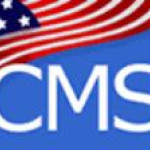- Отрасли: Government
- Number of terms: 15199
- Number of blossaries: 0
- Company Profile:
The federal agency that runs the Medicare program. In addition, CMS works with the States to run the Medicaid program. CMS works to make sure that the beneficiaries in these programs are able to get high quality health care.
Provisions of the Railroad Retirement Act providing for transfers between the trust funds and the Social Security Equivalent Benefit Account of the Railroad Retirement program in order to place each trust fund in the same position as if railroad employment had always been covered under Social Security.
Industry:Insurance
A set time when you can sign up for Medicare Part B if you didn?t take Medicare Part B during the Initial Enrollment Period, because your or your spouse were working and had group health plan coverage through the employer or union. You can sign up at anytime you are covered under the group plan based on current employment status. The last eight months of the Special Enrollment Period starts the month after the employment ends or the group health coverage ends, whichever comes first.
Industry:Insurance
For the 61st through 90th day of hospitalization in a benefit period, a daily amount for which the beneficiary is responsible, equal to one-fourth of the inpatient hospital deductible; for lifetime reserve days, a daily amount for which the beneficiary is responsible, equal to one-half of the inpatient hospital deductible.
Industry:Insurance
Securities of the U.S. Government issued exclusively to the OASI, DI, HI, and SMI trust funds and other federal trust funds. Section 1841(a) of the Social Security Act provides that the public-debt obligations issued for purchase by the SMI trust fund shall have maturities fixed with due regard for the needs of the funds. The usual practice in the past has been to spread the holdings of special issues, as of every June 30, so that the amounts maturing in each of the next 15 years are approximately equal. Special public-debt obligations are redeemable at par at any time.
Industry:Insurance
A general term that refers to Medicare and Medicaid administrative costs, as well as CMS administrative costs. Medicare administrative costs are comprised of the Medicare related outlays and non-CMS administrative outlays. Medicaid administrative costs refer to the Federal share of the States' expenditures for administration of the Medicaid program. CMS administrative costs are the costs of operating CMS (e.g., salaries and expenses, facilities, equipment, rent and utilities, etc.). These costs are reflected in the Program Management account.
Industry:Insurance
A facility which provides treatment for substance (alcohol and drug) abuse to live-in residents who do not require acute medical care. Services include individual and group therapy and counseling, family counseling, laboratory tests, drugs and supplies, psychological testing, and room and board.
Industry:Insurance
Managed Care Organizations are entities that serve Medicare or Medicaid beneficiaries on a risk basis through a network of employed or affiliated providers.
Stands for Managed Care Organization. The term generally includes HMOs, PPOs, and Point of Service plans. In the Medicaid world, other organizations may set up managed care programs to respond to Medicaid managed care. These organizations include Federally Qualified Health Centers, integrated delivery systems, and public health clinics.
Is a health maintenance organization, an eligible organization with a contract under §1876 or a Medicare-Choice organization, a provider-sponsored organization, or any other private or public organization, which meets the requirements of §1902 (w) to provide comprehensive services.
Industry:Insurance
The conditions required to meet this test are as follows: (1) If the trust fund ratio for a fund exceeds 100 percent at the beginning of the projection period, then it must be projected to remain at or above 100 percent throughout the 10-year projection period; (2) alternatively, if the fund ratio is initially less than 100 percent, it must be projected to reach a level of at least 100 percent within 5 years (and not be depleted at any time during this period), and then remain at or above 100 percent throughout the rest of the 10-year period. This test is applied to trust fund projections made under the intermediate assumptions.
Industry:Insurance
Care that you get for a sudden illness or injury that needs medical care right away, but is not life threatening. Your primary care doctor generally provides urgently needed care if you are in a Medicare health plan other than the Original Medicare Plan. If you are out of your plan's service area for a short time and cannot wait until you return home, the health plan must pay for urgently needed care.
Industry:Insurance
Funds included in the trust fund to serve as a cushion in case actual expenditures are higher than those projected at the time financing was established. Since the financing is set prospectively, actual experience may be different from the estimates used in setting the financing.
Industry:Insurance
